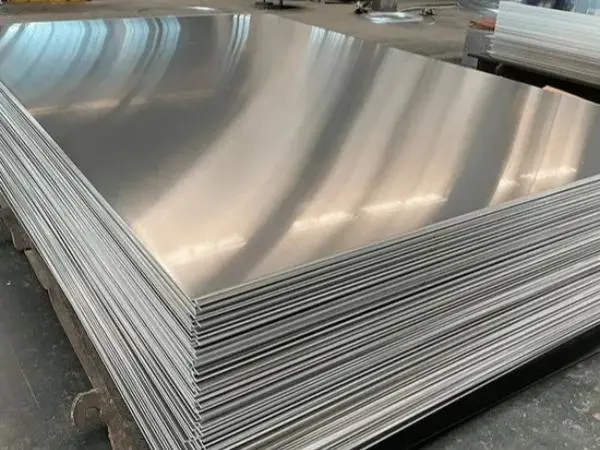- Phone0086 731 8564 8255
- E-mailsales@cscsteel-manufacturing.com
-

ASTM International is a global organization that establishes standardized guidelines for the production of steel. These standards are crucial for steel manufacturers, as they outline the materials, mechanical properties, chemical properties, and metallurgical characteristics of different steel types. In the United States, ASTM standards are widely used to determine the grades of steel H-beams and steel wide flange beams.
Steel H-beams, which feature an H-shaped cross-section, are a common and versatile material in construction. Due to their excellent mechanical and processing properties, they are used in a variety of industries, including construction, bridges, machinery, and more.
Continental Steel Co., Ltd is professional steel H-beams manufacturer, for more details, please contact:sales@cscsteel-manufacturing.com
ASTM Standards for Steel H-Beams
Steel H-beams and wide flange beams meet several ASTM standards, including:
ASTM A36: This standard applies to carbon structural steel, suitable for bolted, welded, or riveted construction of bridges and buildings.
ASTM A572 Grade 50: Covers high-strength, low-alloy steels with columbium and vanadium. This grade is typically used in welded, bolted, or riveted structures.
ASTM A588: Specifies high-strength, low-alloy steels that offer enhanced atmospheric corrosion resistance, often used in projects requiring weight reduction.
ASTM A690: Applies to structural quality high-strength, low-alloy phosphorus steel H-piles and sheet piles, commonly used for bulkheads and excavation work.
ASTM A709: Covers carbon and high-strength low-alloy steels for bridge construction.
ASTM A913 Grade 50: A specification for high-strength, low-alloy structural steel shapes used in the construction of buildings, bridges, and other structures.
ASTM A913 Grade 65: Similar to Grade 50, but with a higher strength specification.
ASTM A992: Applies to steel structural shapes in building frames, suitable for rolled shapes used in building frames, bridges, and general structural projects.
Steel H-Beam Specifications According to ASTM
ASTM standards cover a wide range of sizes and specifications for H-beams, including the following:
W8 Series: W8x18, W8x21, W8x24, W8x28, W8x31, W8x35, W8x40, W8x48, W8x58, W8x67
W10 Series: W10x22, W10x26, W10x30, W10x33, W10x39, W10x45, W10x49, W10x54, W10x60, W10x68, W10x77, W10x88, W10x100, W10x112
W12 Series: W12x26, W12x30, W12x35, W12x40, W12x45, W12x50, W12x53, W12x58, W12x65, W12x72, W12x79, W12x87, W12x96, W12x106, W12x136, W12x152, W12x170, W12x190, W12x210, W12x230, W12x252
W14 Series: W14x22, W14x26, W14x30, W14x34, W14x38, W14x43, W14x48, W14x53, W14x61, W14x68, W14x74, W14x82, W14x90, W14x99, W14x109, W14x120, W14x132, W14x145, W14x159, W14x176, W14x193, W14x211, W14x233, W14x257, W14x283
W16 Series: W16x26, W16x31, W16x36, W16x40, W16x45, W16x50, W16x57, W16x67, W16x77, W16x89, W16x100
W18 Series: W18x35, W18x40, W18x46, W18x50, W18x55, W18x60, W18x65, W18x71, W18x76, W18x86, W18x97, W18x106, W18x119, W18x130, W18x143, W18x158, W18x175, W18x192, W18x211, W18x234
W21 Series: W21x44, W21x50, W21x57, W21x58, W21x55, W21x62, W21x68, W21x73, W21x83, W21x93, W21x101, W21x111, W21x122, W21x132, W21x147, W21x166, W21x182, W21x201, W21x223, W21x248, W21x275
W24 Series: W24x55, W24x62, W24x68, W24x76, W24x84, W24x94, W24x103, W24x204, W24x117, W24x131, W24x146, W24x162, W24x176, W24x192, W24x207, W24x229
W27 Series: W27x84, W27x94, W27x102, W27x114, W27x129, W27x146, W27x161, W27x178, W27x194
W30 Series: W30x90, W30x99, W30x108, W30x116, W30x124, W30x132, W30x148
W33 Series: W33x118, W33x130, W33x141, W33x152, W33x169
W36 Series: W36x135, W36x150, W36x160, W36x170, W36x182, W36x194, W36x210, W36x232, W36x256
Additional specifications also include HP sizes such as HP8, HP10, HP12, HP14, and HP16, with varying dimensions for each.
Selecting the Right H-Beam Material and Model
When selecting materials and models for steel H-beams, consider the following factors:
Project Requirements
Choose materials and models based on specific project needs, including load-bearing capacity, stability, and weight requirements.
Environmental Considerations
Account for the environment where the steel will be used, particularly regarding corrosion resistance, weather resistance, and other relevant properties.
Processing Performance
Evaluate the ease of processing, including welding and cutting properties, to ensure the selected materials can be efficiently processed and assembled.
Cost-Effectiveness
Balance quality and cost-effectiveness when selecting materials, ensuring that the chosen steel meets project specifications while also staying within budget.
By following ASTM standards, manufacturers can ensure the steel H-beams used in construction meet stringent quality, strength, and performance requirements for a variety of applications.




